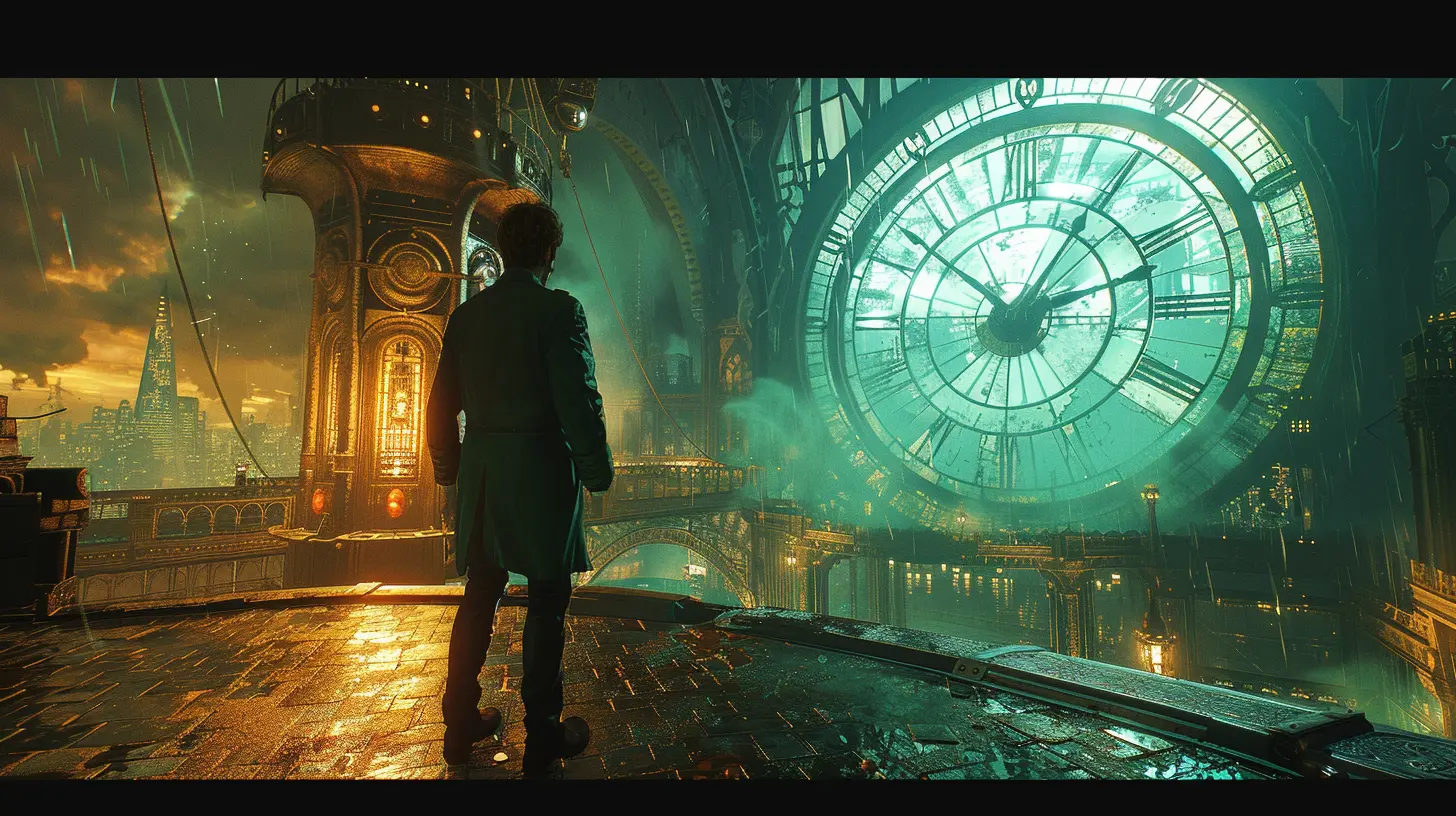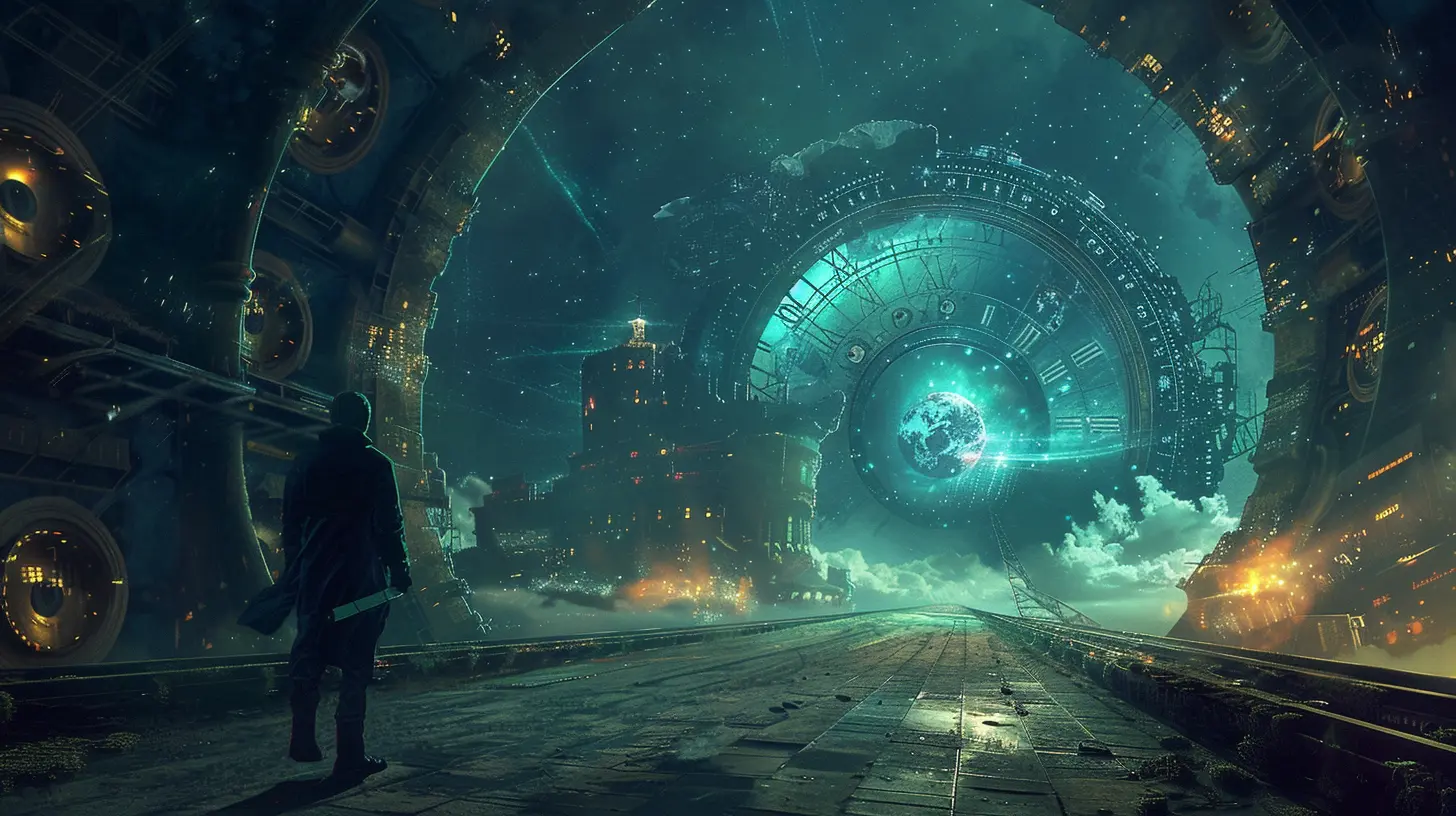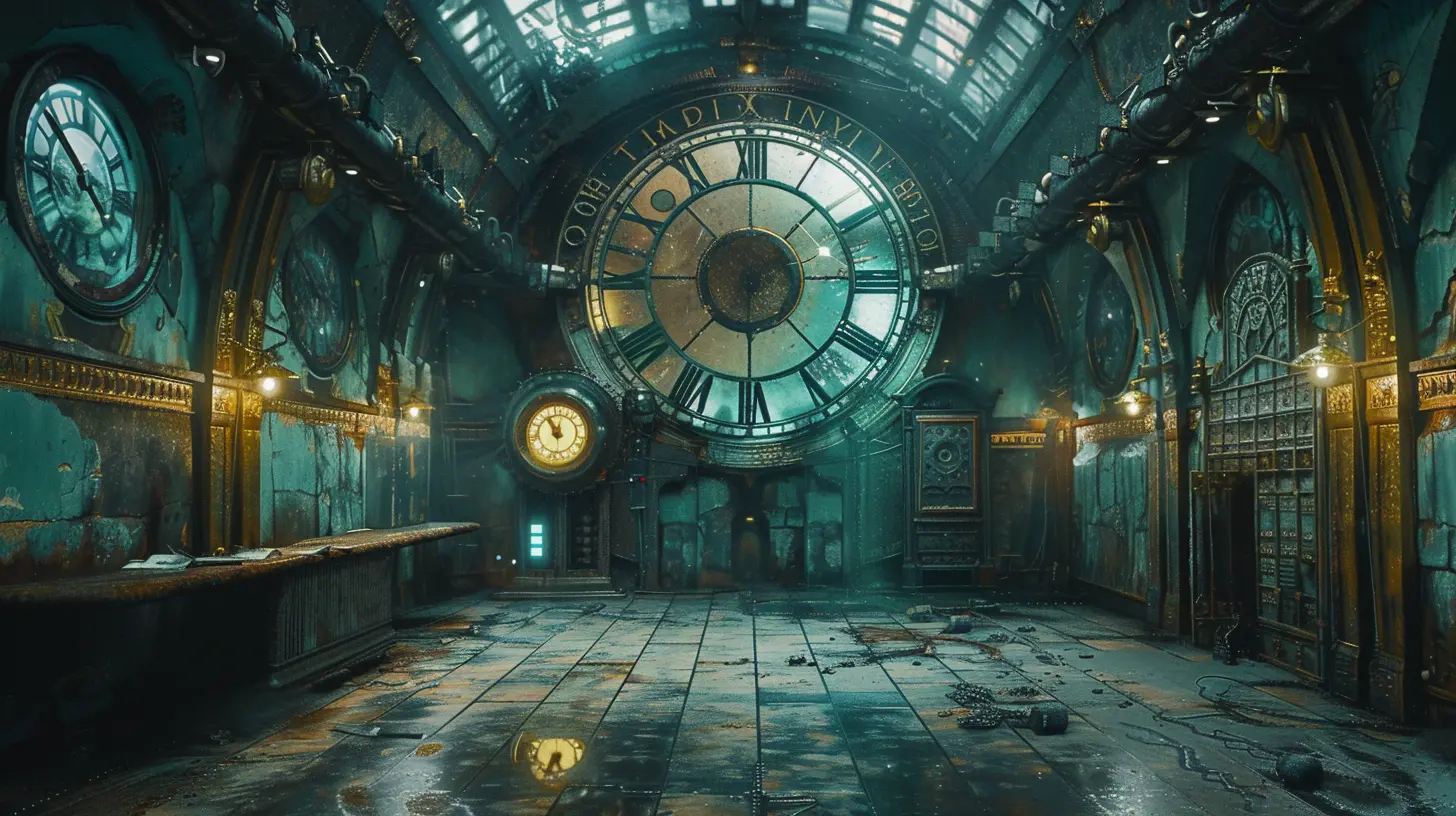How Time Travel Mechanics Work in Adventure Games
18 July 2025
Time travel. Just saying it makes your brain start to do somersaults, right? It’s a concept that’s fascinated gamers, writers, and sci-fi nerds for decades. But when you mix time travel with adventure games — now you’re really cooking with gas. Adventure games feed off mystery, exploration, and cause-and-effect. And what does time travel do best? Mess with cause-and-effect. That’s why it’s such a juicy mechanic to work with in game design.
So, how exactly do time travel mechanics function in adventure games? Let’s dive into the timelines, paradoxes, and puzzles — and figure out why time travel is one of the coolest (and trickiest) tools in a game designer’s kit.
Why Time Travel is a Perfect Fit for Adventure Games
First off, let’s break down the obvious: adventure games are all about interaction, storytelling, and puzzles. Now toss in time travel, and suddenly you’ve got a layered narrative tool, a puzzle mechanic, and a way to revisit the same place — but with new meaning.Think about it. You're not just exploring space anymore — you're exploring time. You can plant a seed in the past and watch it grow into a tree in the future. You can change a decision and see its ripple effect. As a player, it's thrilling to feel that kind of power. But more importantly, it keeps your brain on its toes.
And let’s be honest — who doesn’t want to fix their past mistakes or peek at what’s coming?
The Core Types of Time Travel Mechanics
Not all time travel is created equal. Depending on the game, this mechanic might show up in different ways. Here are some of the common approaches developers use:1. Fixed Timelines (You Can’t Change the Past)
In these types of games, even though you travel back in time, the events are predetermined. Everything you do has already happened — you’re just playing your part in making it happen. It's a bit like being stuck in a time loop you can't break.Example: The Legend of Zelda: Majora's Mask
You relive the same three days over and over in Termina. But even though you restart the cycle, some things reset while others don’t, creating a fixed-yet-loopy mechanic. Clever, right?2. Dynamic Timelines (You Can Change the Past and It Affects the Future)
Now we’re talking mind-bending gameplay. Here, if you go back in time and change something, the game’s world responds. Maybe a character disappears. Maybe a door that was locked is now open. This gives players a tangible sense of impact and consequence.Example: Life is Strange
Every decision you make — every time you “rewind” — changes how characters react, what scenes unfold, and even who lives or dies. Talk about pressure.3. Parallel Timelines (Multiple Realities)
These games operate on the idea that changing the past doesn’t alter your present — it spawns a new branch on the timeline. So your actions create alternate realities, and you might end up juggling more than one version of the same world.Example: Radiant Historia
Here, you navigate between two timelines, making decisions that affect each. You’ll solve puzzles in one timeline that impact your progress in another. It’s like playing interdimensional chess.
The Mechanics Behind the Madness
Time travel in games isn't just a story gimmick. It's a mechanic, a system, a set of rules. So let’s look at how devs actually implement time travel in a way that doesn’t make our brains explode.1. Memory Management (For Player and Game)
When you time travel in a game, the system needs to track what you’ve done — and remember it. That’s a lot of variables. Did you pick up the key before rewinding? Did you already talk to the NPC in this version of reality? Some games solve this with tags or flags in the code that track choices across timelines.And as a player, you’ve got to keep track too! Players often carry knowledge across loops, which means the challenge lies in remembering what you did before, even if the game world doesn’t.
2. Cause-and-Effect Puzzles
One of the juiciest uses of time travel is puzzles that rely on cause and effect. Dig a hole in the past, find it filled in the future. Save a character, stop a war. When these puzzles are done well, they’re satisfying and immersive.Pro Tip: Game devs often plant small visual clues to connect actions across time periods, helping players notice the impact of their actions.
3. Simultaneous Timelines
Some games let you move between timelines in real-time — which is wild. It means two versions of the world are running side-by-side, and you can hop between them. Great for exploration and puzzle-solving, but a nightmare for bugs if not done right.Example: Titanfall 2’s “Effect and Cause” mission
You press a button and instantly switch between two timelines — mid-combat. It’s one of the most talked-about single-player levels in recent years, and for good reason.
Time Loops: The Groundhog Day of Gaming
Let’s talk time loops — arguably the most popular time travel mechanic in adventure games right now.These are self-contained loops where the player repeats the same period over and over, typically to prevent some disaster or uncover a hidden truth. They’re emotionally compelling and mechanically tight.
Why Are Time Loops So Popular?
- Compact world building: You reuse the same space, but discover new layers each loop.- Emotional stakes: You get attached to characters because you see them again and again.
- Replay with purpose: Every loop lets you experiment without permanent consequences.
Examples That Nailed It:
- Outer Wilds: You’ve got 22 minutes before the sun explodes. Each loop gives you a chance to uncover the galaxy’s secrets.- Twelve Minutes: You’re stuck in a time loop in your apartment. Unraveling the mystery takes trial, error, and some seriously dark discoveries.
The Narrative Power of Time Travel
Okay, mechanics aside — let’s talk story.Time travel lets devs play with narrative in ways that straight timelines just can’t. Stories can fold in on themselves, characters can evolve based on what you (not they) remember, and endings can reflect the paths not taken.
It’s not just about cool twists. It’s about emotional depth.
Remember that moment in Life is Strange, when rewinding time doesn’t save someone you care about? That hits different. Time travel isn’t just sci-fi window dressing — it’s a way to talk about regret, fate, choice, and consequences.
Common Pitfalls in Time Travel Game Design
Let’s get real for a second. Time travel is hard to pull off. Some games nail it. Others… not so much. Here are a few landmines developers have to avoid:- Plot Holes: Time travel invites paradoxes. If not carefully thought through, the story collapses under its own logic.
- Over-complication: When the narrative or mechanics are too complex, players get confused — or worse, disconnected.
- Lack of payoff: If a game promises time manipulation but it barely affects the world, it feels gimmicky.
In simple terms? Players want their actions to matter — across time.
Tips for Players Tackling Time Travel Adventures
Feeling ready to jump into a timeline-bending adventure? Here’s some advice from a time-travel veteran:1. Take Notes: Seriously. Jot down what changes when. You’ll thank yourself later.
2. Think in Patterns: Time loops often reward pattern recognition. Watch for routines and trigger points.
3. Experiment Boldly: Many games are designed for trial and error. Don’t be afraid to mess up — it’s part of the loop.
4. Talk to Everyone (More Than Once): Characters may offer different dialogue depending on the timeline or your previous actions.
5. Keep an Eye for Clues Across Time: Shadows, objects, even music cues — they can all signal something’s different.
Where Time Travel in Games is Headed
As tech improves, time travel mechanics are only going to get wilder. We're already seeing AI-powered narratives and environments that adapt to long-term cause-and-effect chains. The future might even involve seamless timeline transitions in open-world games — without loading screens, without resets.There’s also a growing appetite for emotionally driven stories that use time loops and timeline shifting not just as puzzles, but as metaphors — for grief, growth, memory, and even trauma.
Games aren’t just getting smarter with time travel — they’re getting deeper.
Final Thoughts
Time travel in adventure games isn’t just a flashy gimmick. It’s a powerful storytelling and gameplay tool that, when used right, can create unforgettable experiences. Whether you’re rewinding a few seconds to avoid a mistake or reshaping entire realities, playing with time means playing with possibilities.As both players and developers, we’re obsessed with the idea of changing what was, and controlling what could be. It’s human. And when a game taps into that feeling just right? It’s magic.
So next time you boot up a game with time travel, pay attention — the past, present, and future are all in your hands. Literally.
all images in this post were generated using AI tools
Category:
Adventure GamesAuthor:

Leif Coleman
Discussion
rate this article
1 comments
Shannon McGlynn
Time travel mechanics add depth to adventure games, allowing players to manipulate time for puzzles and storytelling in innovative ways.
July 23, 2025 at 4:31 AM

Leif Coleman
Absolutely! Time travel mechanics enrich gameplay by enabling unique puzzle-solving and storytelling, offering players creative ways to engage with the game world.


